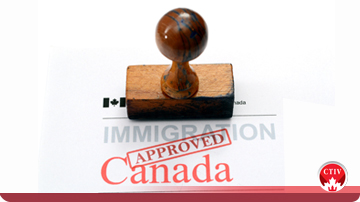Here's a detailed timeline focusing on the key events and people related to Canadian permanent residency obligations:
Timeline of Events & Key Legal Developments
This timeline primarily covers procedural changes and legal decisions impacting how Canada assesses permanent resident compliance with residency obligations, rather than specific individual cases. Dates mentioned in the documents themselves are used where possible; some are approximate.
Pre-2003: Pre-IRPA (Immigration and Refugee Protection Act)
- Before 2003: Permanent resident status was granted under the former Immigration Act, 1976. The "Record of Landing" (IMM 1000B) served as a proof of status, but was not regarded as presumptive proof of that status. Permanent residents were subject to residency obligations, but these differed from those later set out in IRPA. Individuals who abandoned Canada could lose their permanent resident status by signing a form such as the IMM 1342B.
2001: Immigration and Refugee Protection Act (IRPA) Introduced
- The Immigration and Refugee Protection Act (IRPA) was enacted and introduced significant changes to how permanent residency is handled. This new act establishes specific residency obligations (A28) for each five-year period after permanent residency is granted, emphasizing a 730 day presence in Canada. It creates the concept of a permanent resident card. The Act defines how permanent residents can lose their status if they do not meet obligations.
2003: Immigration and Refugee Protection Regulations (IRPR) Enacted
- December 31, 2003: The Immigration and Refugee Protection Regulations (IRPR), including R328(2) and R328(3) came into effect. These regulations recognise previous time spent outside of Canada for those holding returning resident permits as counting toward the A28 residency obligations, offering transitional relief to returning residents. Additionally, the regulation requires a travel document (pursuant to A31(3)) and a permanent resident card.
Specific Rule Changes & Clarifications
- Section 259 of the Regulations is introduced; This defines how travel documents and permanent resident cards will be used.
- IRPA A28: Establishes the core residency obligation requiring 730 days of physical presence in Canada within each 5-year period, including ways of meeting the requirement by being outside Canada while accompanying a Canadian citizen spouse, common-law partner or parent or while working for a Canadian business or the Canadian public service.
- IRPA A44(1): Authorises officers to report a permanent resident who has failed to meet their residency obligations.
- IRPA A46(1)(c): Details when permanent residents cease to have that status.
- IRPA A31(3): Introduces the A31(3) travel document. This document allows a permanent resident to travel back to Canada, if they do not hold a valid permanent resident card. This travel document is used when decisions on permanent residency status are made overseas, and is counterfoil coded to indicate the nature of the case, as follows:
- R-1: Issued when an officer overseas has determined the permanent resident has met their obligations.
- RC-1: Issued when an officer overseas has determined H&C grounds justify maintaining a permanent resident's status.
- RX-1: Issued when an officer overseas has determined the permanent resident has not met their obligations but has filed an appeal to the IAD, and has been present in Canada at least once in the previous 365 days.
- Voluntary Relinquishment: Procedures are implemented to allow permanent residents to voluntarily relinquish their status (IMM 5538B), particularly in cases where they want to enter Canada as temporary residents or are required to relinquish their status for other reasons.
2005-2015: Administrative & Clarification Updates
- November 25, 2005: Updates are made to reflect the transition from CIC to the CBSA, clarifying ministerial roles in the administration of IRPA, addressing the coming into force of R259, and making modifications to H&C and POE examination processes.
- January 23, 2015: Section 6.5 of ENF 23 is updated to include additional criteria for meeting residency obligations whilst working abroad.
Legal Case: Baker v. M.C.I.
- 1995: The Federal Court – Trial Division initially dismisses a judicial review related to a humanitarian and compassionate application under the old Immigration Act, which is important as it is a precursor of the modern humanitarian and compassionate provisions. The Court certified the question of whether the best interests of the child must be a primary consideration.
- 1996: The Federal Court of Appeal dismissed the appeal from the Trial Division, holding that the question of whether to consider the best interests of a child was not properly before the Court.
- July 1999: The Supreme Court of Canada rules in Baker v. M.C.I., stating that the best interests of children must be a primary consideration in immigration decisions. The court found that the immigration officer's decision in this case was unreasonable and demonstrated bias. The application is returned to the Minister for redetermination. This decision establishes key principles of administrative law for immigration cases and the importance of children's interests.
Ongoing Procedures & Guidance
- IMM 5511B Questionnaire: The IMM 5511B form is introduced. This is used by officers to help make decisions relating to permanent resident residency obligations.
- IAD Appeals: The Immigration Appeal Division (IAD) within the IRB was created as an avenue for those whose permanent resident status was revoked to appeal. This includes an appeal of an overseas decision regarding non-compliance with residency obligations.
Cast of Characters
This is a list of principal individuals and groups mentioned in the sources, along with short descriptions:
- Permanent Resident: An individual who has been granted the right to live in Canada indefinitely. This is a primary subject of the documentation and therefore the principal "character". They are subjected to various obligations and consequences, and have avenues of appeal open to them.
- Immigration Officer: The primary decision-makers. They are tasked with assessing compliance with the residency obligation, H&C factors, and issuing appropriate documentation and reports. Their role involves decision making, application of the rules, and proper record keeping. They are bound by the rules of the Act, Regulations, and Departmental Policy, as well as jurisprudence such as Baker v. M.C.I.
- Minister of Immigration, Refugees and Citizenship Canada: The Minister is responsible for overall immigration policy and the administration of IRPA, including the enforcement of the Act and the establishment of policy.
- Minister of Public Safety and Emergency Preparedness: Responsible for the administration of IRPA as it relates to examination at Ports of Entry and the enforcement of the Act, including arrest, detention and removal.
- Immigration Appeal Division (IAD): A division of the Immigration and Refugee Board (IRB) that hears appeals related to immigration decisions, particularly decisions made overseas regarding non-compliance with residency obligations.
- Officer L: The specific Immigration officer involved in the Baker v. M.C.I case. Their conduct and notes are deemed to have shown unreasonable bias and a failure to consider the interests of children, resulting in the Supreme Court's decision to send the matter back to the Minister for redetermination.
- Ms. Baker: The appellant in the Baker v. M.C.I. case, whose initial humanitarian and compassionate (H&C) application was rejected by the immigration officer.
- Canadian Citizen: A person who is a citizen of Canada. Their status is relevant, as permanent residents can meet their residency obligations by accompanying a Canadian citizen spouse, common-law partner or parent.
- Child: A child of a Canadian citizen or permanent resident, including an adopted child, who is less than 22 years of age and has never been married or in a common-law relationship. Their best interests are a primary consideration in residency obligation decisions.
Sanjay Prasher – Trusted Immigration Consultant in North York, Toronto
Sanjay Prasher is a Regulated Canadian Immigration Consultant (RCIC) specializing in Canadian immigration rules and assisting clients with Permanent Residency (PR) status compliance in Canada. He helps individuals navigate PR residency requirements Canada, ensuring they meet residency obligation rules Canada to maintain PR status Canada and avoid losing PR status Canada.
For those needing PR card renewal Canada, Sanjay provides expert guidance to streamline the process. He also supports international students looking to study in Canada, offering insights into visa applications, permits, and pathways to PR.
With extensive experience, he ensures clients fulfill their permanent residency obligations Canada and remain compliant with immigration laws. Whether you need help with PR renewal, compliance, or study permits, Canadian Title Immigration and Visa Consulting Inc. in North York, Toronto, is your trusted partner.
Let me know if you would like any clarification or more detail on any specific aspect.
Disclaimer: This blog is for informational purposes only and does not constitute legal advice. While every effort has been made to ensure the accuracy of the information provided, Canadian immigration laws and policies are subject to change. For specific advice tailored to your situation, please consult Sanjay Prasher immigration consultant in north york Toronto or Canadian Title Immigration and Visa Consulting Inc. directly. Neither the author nor the organization assumes any liability for actions taken based on this content.

